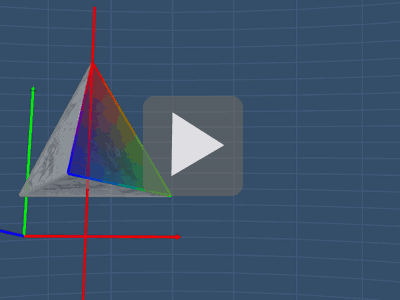
3D Rotation Symmetry - Cube and Tetrahedron
Lesson Objective
In this lesson,
we will learn
about rotation symmetry for a cube and tetrahedron.
About This Lesson
After familiarizing with the basics of rotational
symmetry, we can now examine the rotational symmetry for 3-Dimensional objects.
In this lesson, we will see examine all the axes of rotational symmetry for a cube and tetrahedron.

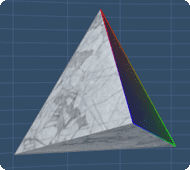
CUBE TETRAHEDRON
You can proceed by
reading the study tips first or watch the math video
or try out the practice questions.
In this lesson, we will see examine all the axes of rotational symmetry for a cube and tetrahedron.


CUBE TETRAHEDRON
Tip #1
For 3D rotational symmetry, the ideas are
basically the same as 2D Rotational symmetry.
Looking at the picture, when we rotate the cube 360o about the axis, notice that the cube will fit (i.e. match) itself for 4 times.
When this happens, the axis is called axis of rotational symmetry of order 4.
Looking at the picture, when we rotate the cube 360o about the axis, notice that the cube will fit (i.e. match) itself for 4 times.
When this happens, the axis is called axis of rotational symmetry of order 4.
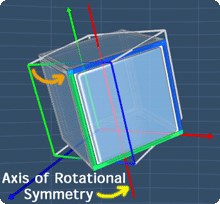
Tip #2
Next, the cube has a total of 13 axes of
rotational symmetry. You can view them by
watching the
math video below.
Also, the step-by-step solution shown in the practice question will show you the pictures for these axes.
Also, the step-by-step solution shown in the practice question will show you the pictures for these axes.
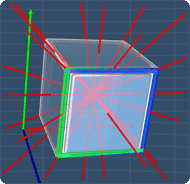
Tip #3
As for the tetrahedron, it has a total of 7 axes of
rotational symmetry. You can view these axes in the
math video below.
Also, the step-by-step solution shown in the practice question will show you all the pictures of these axes.
Also, the step-by-step solution shown in the practice question will show you all the pictures of these axes.
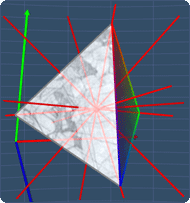
Math Videos Transcript
Multiple Choice Questions (MCQ)
Now, let's try some MCQ questions to understand
this lesson better.
You can start by going through the series of questions on rotation symmetry or pick your choice of question below.
You can start by going through the series of questions on rotation symmetry or pick your choice of question below.
- Question 1 on axis of rotational symmetry for a cube
- Question 2 on axis of rotational symmetry for a tetrahedron

